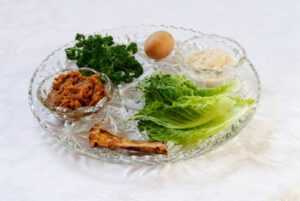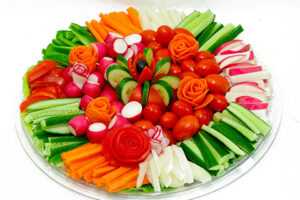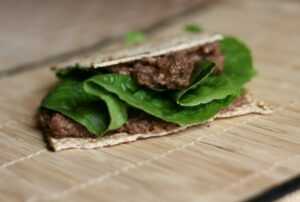Some Pre-Pesach Messages, Changes in Deliveries:
- There will be no delivery over Chol Hamoed, Monday, April 10, and Wednesday, April 12.
- Deliveries scheduled for the Monday after Pesach will be moved to Tuesday, April 18. Wednesday deliveries will remain as usual.
Bi-weekly recipients:
Since we do not deliver over Chol Hamoed, bi-weekly delivery recipients will be facing a three-week gap. Therefore, if you wish to expand your regular boxes or make a special order for the holidays, please contact us as soon as possible to give advance notice.
Open Day at Chubeza:
In keeping with our twice-yearly tradition, we invite you for a Chol HaMoed “pilgrimage” to Chubeza to celebrate our Open Day.
The Pesach Open Day will take place on Thursday, April 13, the 17th of Nissan, from 1:00 PM -6:00 PM. For those of you who not yet haven’t experienced it, the Open Day gives us a chance to meet, tour the field, and nibble on vegetables and other delicacies. Children have their own tailor-made tours designed for little feet and curious minds, plus special arts and crafts and cooking activities and a vast space to run around and loosen up. (So can the adults…)
On Open Day, we also have a stand for vegetable sales, so you can replenish your vegetable supply.
The festivities take place in the fields outside the moshav. Driving instructions are on our website under “Contact Us.” Please make sure to check this out before heading our way.
Chag Sameach from all of us. We look forward to seeing you!
____________________________________
Pesach is Here/ Naomi Shemer
The fragrance of green stalks and sweet nut loaves The scent of cleanliness, doves in the groves Are a sign that Pesach is here
Chorus songs glide, a joyous groom and bride Are a sign that Pesach is here
A desert breeze will blow, as autumn now will go It’s a sign that Pesach is here
In the month of Spring Child and father will sing Psalms abound with light all ’round
The skies are blue, the days are long It’s time to read the Song of Songs New garments aired, matzah and honey paired It’s a sign that Pesach is here
The table’s set with care, afikoman gifts we’ll share With four cups of wine we sing and we dine It’s a sign that Pesach is here

Well, it’s almost Pesach, a holiday that is not generally considered a culinary event. Most people think of it as a holiday of lotsa-matzah and meat, and depending on your tradition, rice or potatoes. But if we take a look at the Seder symbols and the little appetizer ceremonies that precede the great meal, one may notice that lots of vegetables and some fruit take an honored role in the celebration. This week’s Newsletter turns the spotlight onto them.
The first to tickle the taste buds is the Karpas, which is basically any vegetable. Customs vary among using celery, parsley, radish, potato or onion. All these vegetables are now in season (along with many others), and therefore they’re each a great nibble-nosh possibility. The vegetable is dipped in salt water to arouse interest and curiosity. Eating a vegetable at the beginning of the evening is an appetizer that calms the hungry belly and allows for some further conversation regarding the present Haggadah text, and more that’s yet to come. It is also a mark of liberty and abundance, as appetizers are served when a bounty of food is available and there’s time and serenity to sit around and converse over dinner.

The next “shmear” is the Maror, and it includes the rest of the Seder plate vegetables – maror, horseradish and haroset. Maror is usually lettuce, which in this cultivated day and age is no longer bitter, at times even sweet, but the wild lettuce – particularly the “prickly lettuce” variety – is certainly pungent and explains its choice as a symbol of bitterness. Other Maror options were chicory, sea-holly (probably a purple thistle) and the chervil herb, as well as horseradish. Today we usually are kind to ourselves and eat lettuce, which from the description of the others definitely sounds like the best option. There are those who add spicy horseradish to the lettuce, perhaps aiming for the bitterness or because pungency is one of the stronger, more severe flavors. As a fan of the spicy, adding horseradish is a treat. I love how the sweet leaves meet the bitter root and the nose joins the party when the powerful whiff of horseradish hits it.
At the beginning, the Maror is eaten alone, but in the next round, another flavor is added to the piquant bitterness – sweet Haroset, made of fruit and nuts. Basically an excellent natural energy bar. Some make it more liquid, resembling date honey, and other times it’s a pesto-like spread. Then there are those who make it the texture of a finely-chopped salad. This season we have not yet encountered fresh fruit, so use dry fruit: figs, dates, walnuts and almonds. There are those who add apples and other natural sweeteners.
When we learned about the Seder customs, my daughter Shahar wondered why we dip Maror in Haroset. As we explored the topic, we learned that some explain this is meant to lessen the bitterness of Maror. Others tie the bitterness of the slavery in Egypt to the Haroset, symbolizing the mortar used to adhere the bricks to each other, as the Israelites slaved away building the mammoth Egyptian monuments. Shahar thought that they are eaten together so we can taste the entire gamut of the story at once, the bitter with the sweet, the anxiety and happy end, the distress and happiness.
Another nice explanation we found belongs to Rabbi Avraham Eliyahu Ki Tov who ascertained that the Seder is comprised of a combination of enslavement and salvation. The combination of maror and charoset is one of bitter and sweet, teaching us that they both depend on us, on the way we view matters. One can see things like the Israelites in the desert – the maror (hardship) which lies within the haroset, or the world can be viewed, like Pollyanna, seeing the haroset (sweetness) with the maror (hardship). (Pollyanna is Shahar’s addition, not part of the original commentary…)

The Seder is one busy evening, with a bevy of flavors sharing one table: salty, sweet, bitter and spicy. Different colors, multi-textures, varied desires… a colorful disarray. Sort of like a Chubeza box….
Wishing you a Chag Sameach! Enjoy the variety of flavors, enjoy the Seder and the disarray, the confused spring weather and the blessed renewal.
From all of us at Chubeza, Happy Pesach and a peaceful spring. Looking forward to welcoming you all to the Open Day!
_______________________________
WHAT’S IN THIS WEEK’S HOLIDAY BOXES?
Monday: Parsley/coriander/dill, potatoes, lettuce/curly lettuce, cucumbers, cauliflower/broccoli, tomatoes, cabbage, leeks/fresh onions, garden peas/snow peas/ fava beans, carrots. Small boxes only: beets.
Large box, in addition: Kohlrabi/fennel, spinach/Swiss chard/broccoli leaves, cherry tomatoes/zucchini/white turnips, celeriac/ green garlic.
Wednesday: Snow peas/garden peas/fava beans, cauliflower, cucumbers, tomatoes, carrots, lettuce, cabbage, dill/cilantro/parsley, beets, leek/onion/green garlic, a gift: mizuna/New Zealand spinach. Small boxes only: potatoes.
Large box, in addition: White turnip/cherry tomatoes, Swiss chard/broccoli greens, broccoli/artichoke, kohlrabi/daikon.
And there’s more! You can add to your basket a wide, delectable range of additional products from fine small producers: flour, fruits, sprouts, honey, dates, almonds, garbanzo beans, crackers, probiotic foods, dried fruits and leathers, olive oil, bakery products, apple juice, cider and jams, dates silan and healthy snacks and goat dairy too! You can learn more about each producer on the Chubeza website. On our order system there’s a detailed listing of the products and their cost, you can make an order online now!
